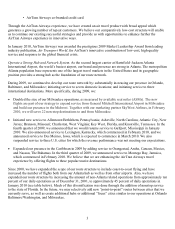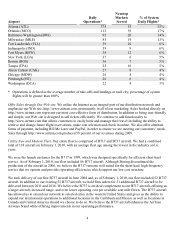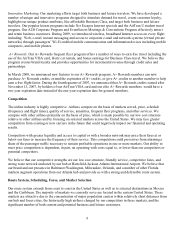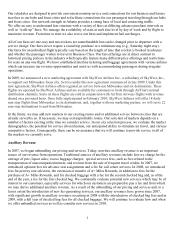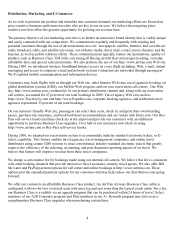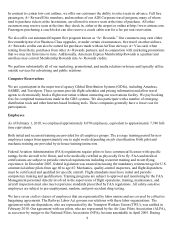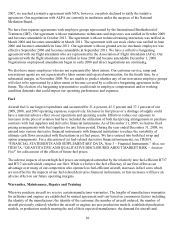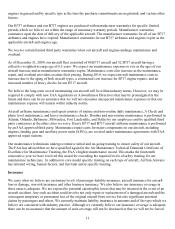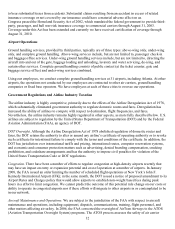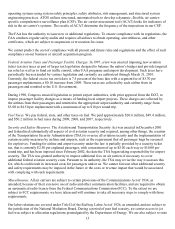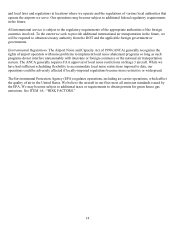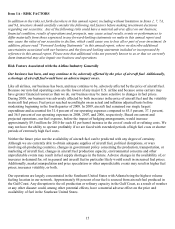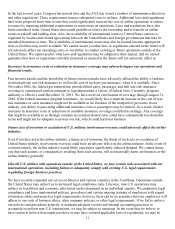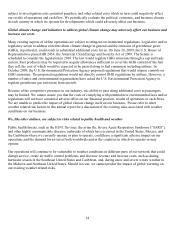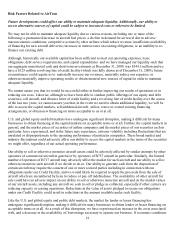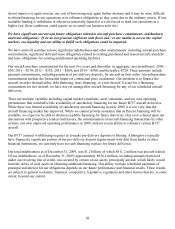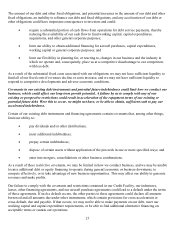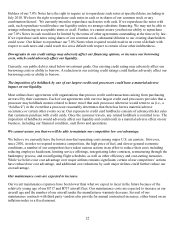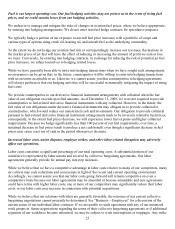Airtran 2009 Annual Report Download - page 22
Download and view the complete annual report
Please find page 22 of the 2009 Airtran annual report below. You can navigate through the pages in the report by either clicking on the pages listed below, or by using the keyword search tool below to find specific information within the annual report.13
operating systems using system safety principles, safety attributes, risk management, and structured system
engineering practices. ATOS utilizes structured, automated tools to develop a dynamic, flexible, air carrier-
specific comprehensive surveillance plan (CSP). The air carrier assessment tool (ACAT) looks for indicators of
risk in the air carrier’s systems. The results of ACAT determine the frequency of the inspections in our CSP.
The FAA has the authority to issue new or additional regulations. To ensure compliance with its regulations, the
FAA conducts regular safety audits and requires all airlines to obtain operating, airworthiness, and other
certificates, which are subject to suspension or revocation for cause.
We cannot predict the cost of compliance with all present and future rules and regulations and the effect of such
compliance on our business or aircraft acquisition program.
Federal Aviation Taxes and Passenger Facility Charges. In 1997, a law was enacted imposing new aviation
ticket (excise) taxes as part of larger tax legislation designed to balance the nation’s budget and provide targeted
tax relief as well as to fund air traffic control, other FAA programs and airport development. Such taxes have
periodically been extended by various legislation and currently are authorized through March 31, 2010.
Currently, the federal excise tax on tickets is 7.5 percent of the base fare with a segment fee of $3.70 per
passenger enplanement, a $0.10 increase from 2009. These taxes are collected by each airline from its
passengers and remitted to the U.S. Government.
During 1990, Congress enacted legislation to permit airport authorities, with prior approval from the DOT, to
impose passenger facility charges as a means of funding local airport projects. These charges are collected by
the airlines from their passengers and remitted to the appropriate airport authority and currently range from
$3.00 to $4.50 per enplanement with a maximum of up to $18 per round trip.
Fuel Taxes. We pay federal, state, and other taxes on fuel. We paid approximately $30.6 million, $49.4 million,
and $50.2 million in fuel taxes during 2009, 2008, and 2007, respectively.
Security and Safety Measures. The Aviation and Transportation Security Act was enacted in December 2001
and federalized substantially all aspects of civil aviation security and required, among other things, the creation
of the Transportation Security Administration (TSA) to oversee all aviation security and the implementation of
certain security measures by airlines and airports, such as the requirement that all passenger bags be screened
for explosives. Funding for airline and airport security under the law is partially provided by a security ticket
tax, that is currently $2.50 per enplaned passenger, with a maximum of up to $5.00 each way or $10.00 per
round trip, and has been imposed since February 2002, the date the TSA began taking responsibility for airport
security. The TSA was granted authority to impose additional fees on air carriers if necessary to cover
additional federal aviation security costs. Pursuant to its authority, the TSA may revise the way it assesses this
fee, which could result in increased costs for passengers and/or us. We cannot forecast what additional security
and safety requirements may be imposed in the future or the costs or revenue impact that would be associated
with complying with such requirements.
Miscellaneous. All air carriers are subject to certain provisions of the Communications Act of 1934, as
amended, because of their extensive use of radio and other communication facilities, and are required to obtain
an aeronautical radio license from the Federal Communications Commission (FCC). To the extent we are
subject to FCC requirements, we have taken and will continue to take all necessary steps to comply with those
requirements.
Our labor relations are covered under Title II of the Railway Labor Act of 1926, as amended, and are subject to
the jurisdiction of the National Mediation Board. During a period of past fuel scarcity, air carrier access to jet
fuel was subject to allocation regulations promulgated by the Department of Energy. We are also subject to state


